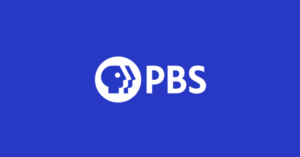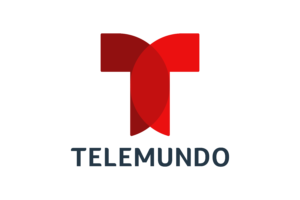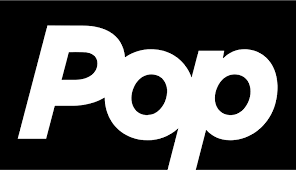Programming languages to learn for beginners
What Exactly Is computer programing language?
The term “computer programming language” refers to any of the many languages used to express a set of specific instructions for a digital computer. These instructions can be executed directly when they are in machine language, the numerical form specific to a particular computer manufacturer, or after translation from a “higher-level” language.
Since machine and assembly languages are “low-level,” a programmer must explicitly handle every peculiarity of a computer’s operation and data storage. High-level languages, on the other hand, protect programmers from these kinds of issues and offer notation that is easier for programmers to write and understand.
Why is programming important?
In order to innovate and produce environmentally friendly solutions for global issues, programming is essential. Enhancing and boosting the capabilities of computers and the internet is crucial for our day-to-day existence.
Programming facilitates the acceleration of a machine’s input and output operations. It is crucial to precisely process data and information by automating, gathering, managing, calculating, and analyzing it. The creation of software and apps that support computer and mobile users in their daily lives is possible by programming.
However, not all jobs in this field require the same skill sets and knowledge. By learning the right programming languages and expanding your knowledge of the languages you already understand, you can enhance your resume and stand out from other candidates.
Best Programming Languages to Learn as a Beginner
Some of the famous programming languages to learn as a beginner are:
- Python
- Java
- JavaScript
- HTML and CSS
- C
- C++
- C#
- PHP
- SQL
Python :
Probably the easiest programming language on this list to learn is Python. Many people claim that Python is a popular choice for beginners because of its syntax, which is clear, intuitive, and nearly English-like.
Guido van Rossum, a Dutch programmer, created the open-source language Python in 1991. Its easy-to-use design included features like grouping statements together using indentation rather than brackets. Python is a fairly concise language as well, that completes complicated tasks with just a few lines of code. Along with Java and JavaScript, Python rose to prominence as one of the most widely used programming languages in the 2010s.
Java :
Java is a class-based, object-oriented, high-level programming language that aims to minimize implementation dependencies. The goal of this general-purpose programming language is to enable programmers to create code once and have it run anywhere. This means that once code has been compiled, it can run on any platform that supports Java without requiring recompilation. Generally, Java programs are compiled to bytecode, which is compatible with any Java virtual machine (JVM) and can operate on any kind of computer architecture. Java has fewer low-level features than both C and C++, but it has a syntax that is similar to both of them. Traditional compiled languages usually do not offer dynamic features like reflection and runtime code modification, but the Java runtime does.
JavaScript :
The most common language to learn is JavaScript. A programming language called JavaScript (JS) increases the interactivity of mobile apps and webpages. Game development is another frequent usage for it. The potential of JavaScript to provide features like animations, dropdown menus, and color-changing buttons to webpages is well recognized.
Examples of popular websites and mobile applications developed with JavaScript include Google, Facebook, YouTube, and Twitter.
HTML and CSS :
Front-end development uses HTML and CSS in addition to JavaScript. Hyper Text Markup Language is known as HTML. It is the common programming language used for documents intended to be viewed via a web browser. Cascading Style Sheets, or CSS, is a language with rules. It establishes the layout and style of particular elements in a document published in a markup language (such as HTML).
Features of HTML and CSS
A page’s structure is provided by HTML, and its visual layout uses CSS. They are the basis of web development when combined.
Both HTML and CSS are easy to use. They are an excellent choice for those new to software development because of their accessibility.
HTML works on any platform. Since it is browser-based, you can use it with almost any device that has a basic operating system (OS).
C :
C is a procedural language with multiple paradigms. It is a low-level language that doesn’t require a lot of runtime because it offers structured programming. Because of this, C is a fantastic language for kernel-level applications, hardware drivers, and operating systems. There are two extensions for C:
- C# (pronounced C sharp). C# is a high-level, object-oriented programming language that compiles into byte code rather of machine code.
- C++(pronounced c plus plus). Bjarne Stroustop developed C++ to expand on C by incorporating object-oriented programming features while maintaining C’s well-known speed and user-friendliness. It is a General Purpose Language (GPL) programmer.
PHP :
Another well-liked open-source programming language for server-side development is PHP(recursive acronym for PHP: Hypertext Preprocessor). The programming language can be used for automation and includes features that are comparable to those of Python. PHP is compatible with the Selenium framework, just like the other programming languages for automated testing.
SQL :
SQL programming, in addition to Python, is necessary for effectively utilizing data in web applications. , on the other hand, makes it possible to save, retrieve, and modify data inside of an already-existing database, in contrast to other coding languages on our list.
In order to effectively query a database, programmers interested in working with apps that use databases frequently, such as social media platforms, payment processors, and music libraries, should consider learning SQL. As the primary database programming language, SQL has its own markup that must be learned. For aspiring data professionals, SQL proficiency is typically a must-have skill for roles like database administrator, data analyst, and QA engineer.
Also Read: Essential Tips for Professional Photography


